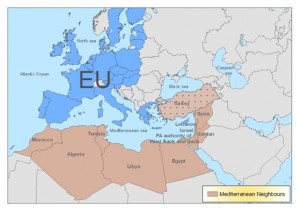In order to be able to have a deeper understanding of the Mediterranean diet it would be good to know where it all started, where the Mediterranean foods, Mediterranean cuisine and Mediterranean diet started.
Below is the analysis of the second group of countries which comprise the Mediterranean group (the first part was analyzed in a previous document, The mediterranean countries Part 1

Greece: Greece is a country in Southeastern Europe wholly situated in the Mediterranean sea with a vast number of islands and with the 10th longest coastline in the world. Greece is the first area in Europe where early and advanced civilizations started. Greece mainly enjoys the advantages of the Mediterranean climate. The Greek culture has evolved over thousands of years and has affected all modern civilizations. The Greek cuisine, and especially the Cretan cuisine, is often cited as the mother of the healthy Mediterranean cuisine. It incorporates all the components of the Mediterranean cuisine into the main dishes and foods consumed daily by the Greeks. Some the dishes now served on the Greek table can be traced back to ancient Greece, an example being the lentil soup. Greek cuisine uses flavours, like oregano, mint and dill, which are not often found in other cuisines
Turkey: Turkey is a Eurasian country, it stretches into two continents, Europe and Asia. It is bordered by eight countries and the Mediterranean Sea in its western and south boarders. Turkey has a variance of climates with a temperate Mediterranean climate along its coasts in the Mediterranean Sea. Turkish cuisine is not homogeneous, however the cuisines of the Aegean and Mediterranean regions, where the olive trees grow, exhibit the basic characteristics of the Mediterranean cuisine as they are rich in olives, olive oil, fish, yogurt and cheese. Characteristically it should be mentioned that a typical Turkish breakfast in these areas consists of white cheese, olives, eggs, tomatoes, honey and fruits.
Cyprus: Cyprus is the third largest island in the Mediterranean Sea and it is located in the Eastern Mediterranean and has a strategic location in the Middle East. As an island it is completely surrounded by the Mediterranean Sea and enjoys all the characteristics of the Mediterranean climate. The Cypriot cuisine is a typical Mediterranean cuisine with all the components and characteristics. The white cheese native of Cyprus known as Halloumi cheese originated in Cyprus during the Medieval Byzantine period. Seafood and fish dishes in the Cypriot cuisine include squid, octopus, red mullet and sea bass. Olives and Olive oil are basic components of the Cypriot cuisine. Fresh vegetables and fruits are also common ingredients of the Cypriot cuisine. Typical fruits are apples, grapes, oranges, watermelons and strawberries. Cyprus is also well known for its desserts like the lokkoumi, Turkish delight, a sweet protected by protected geographical indication, PGI.
Syria: Syria is a country in Western Asia bordering the Mediterranean Sea. Syria’s climate is hot and dry and along the Mediterranean coastline is has the characteristics of the Mediterranean climate. The Syrian cuisine is rich with variable ingredients used, mainly linked with the Syrian region and with many influences from the region, mainly Greek and Turkish. The main dishes of the Syrian cuisine are kibbeh, hummus, tabbouleh and fatoush, all with basic Mediterranean components and elements. Syrian cuisine is also well known for its cheeses with the very popular white cheese, jibbneh mashallale. Syrian pastry has as its basic component nuts and honey, two other basic components of the Mediterranean cuisine.
Part 3 which follows will deal with the rest of the Mediterranean countries.














{ 0 comments… add one now }